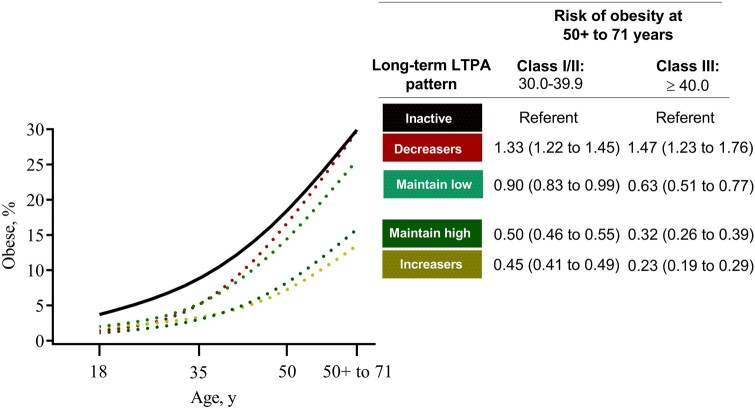Figure 4.
Risk of being obese in midlife (50-71 years) by long-term leisure time physical activity (LTPA) patterns . Odds ratios (ORs; with 95% confidence intervals in parentheses) were adjusted for age (years), race-ethnicity (non-Hispanic White, non-Hispanic Black, Hispanic, other, or missing), education (less than high school, high school, post high-school or some college, bachelor degree or more, missing), smoking status and dose (never smoker, former smoker and ≤20 cigarettes per day, former smoker and >20 cigarettes per day, current smoker and ≤20 cigarettes per day, current smoker and >20 cigarettes per day, missing), diet quality (2015 Healthy Eating Index; 0-100 points), total energy intake (kilocalories per day), alcohol consumption (grams per day), parity (number of births), use of oral contraceptives (never or <1 year, 1-4 years, 5-9 years, ≥10 years, missing), menopausal hormone therapy use (never, continuous estrogen plus progestin [EPT] use [15+ d/mo progestin], sequential EPT [<15 d/mo progestin], estrogen only, missing), and BMI at age 18 years (normal weight [<25.0 kg/m2], overweight [25.0-29.9 kg/m2], obese class I [30.0-34.9 kg/m2], obese class II [35.0-39.9 kg/m2], and obese class III [≥40.0 kg/m2]).

